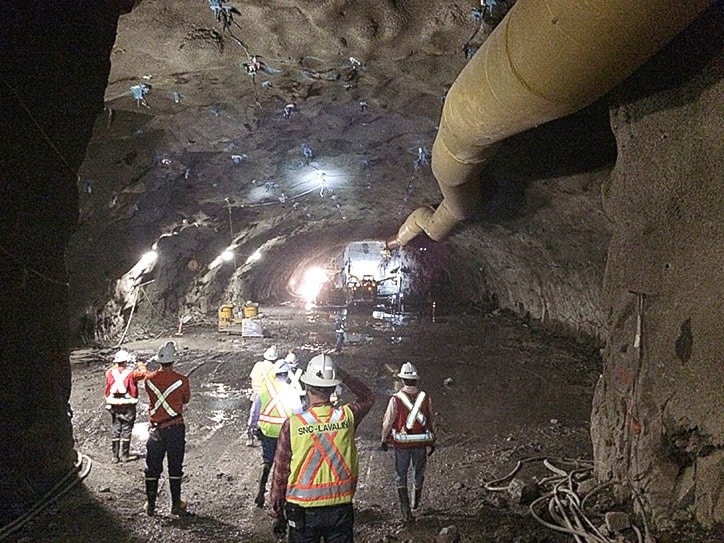The public gets its first look at the John Hart Generating Station project construction site with a community event this Sunday, and major progress has also been made out of sight.
BC Hydro has announced details of the first public tour of the worksite, which will be accessible only via a bus shuttle running from Shopper's Row, with pickup and drop-off directly in front of Spirit Square.
The site event is scheduled for 10 a.m. to 3 p.m., with buses running every 10 minutes or so beginning at 9:30 a.m. Appropriate attire, especially footwear, is strongly recommended due to the uneven surface at the worksite.
Displays and activities at the interpretive centre will include bucket rides in a BC Hydro line truck, a Museum at Campbell River puppet show and crafts, booths for BC Parks, City of Campbell River, Rotary Club, BC Hydro Power Pioneers and the Chamber of Commerce.
A lunch by donation will be provided by the Campbell River Kinsmen, with the help of funding from BC Hydro and the donation of 2,500 hamburgers by SaveOn Foods. All proceeds will go to the Kinsmen for local projects.
At the main construction site, project staff will provide project overviews and answer questions, and photos are encouraged. Visitors may walk partway down the two access tunnels, but will not be allowed to enter the tunnels or main generating station cavern for safety reasons.
Dig gets big
In its June project update, BC Hydro announced the main generating station cavern has now been blasted to its full span. Rock will continue to be removed downward until the cavern ceiling reaches approximately 40 metres in height.
One of the adit tunnels joining the two main access tunnels reached approximately 200 metres in length by the end of June and will be complete in the coming days.
Loose rock delay
Work on the main access tunnel was set back when crews encountered "unconsolidated ground", or loose rock that caused blasting to be delayed.
Basically there's been loose rock and material we've been dealing with," said Stephen Watson, BC Hydro spokesman. "We've had really good, Class 1 rock we've been dealing with all along. So this is a bit of a challenge."
Limited blasting has resumed while engineers perform investigative drilling to determine the extent of the vein of loose material and plot a course to shore up the tunnel in that area.
"We'll be dealing with some techniques in addressing that area in next weeks and month or so," Watson said. "The good part, if anything, is this has to do with main access tunnel, not the powerhouse. With the generating station itself, things are looking good."
Critter care
Crew members have begun receiving hard hat stickers for environmental actions like saving a frog, a critter or a snail, or who have taken steps to protect water quality at the construction site.
The sticker campaign is part of an overall environmental awareness program instituted at the job site, and has resulted in the relocation of critters including tree frogs, garter snakes and western redback salamanders.
Crew were also educated by environmental teams about the behaviour of deer during the recent fawning season so disruptions to the animals could be minimized, Watson said in the monthly report.
Shocking development
BC Hydro has employed a lightning strike detection system, known as Indji, which should help mitigate disruptions to Campbell River water flow levels in the event of a strike.
The Indji system works using existing cell towers in the region to correlate and pin down precise locations of lightning strikes, which are then overlaid on a map of BC Hydro's power line locations.
On April 23, a lightning strike and resulting static activity forced an unplanned shutdown of the inflow gates into the generating station, causing a sudden reduction in the river's flow. The Indji program will give operators advance warning of lightning strikes, allowing them to initiate precautionary measures to mitigate sudden river flow reduction and thereby protect fish habitat.
The new power generating station, tentatively schedule to open in the fall of 2018, will included a built-in diversion system that will react to this type of disruption instantaneously.
